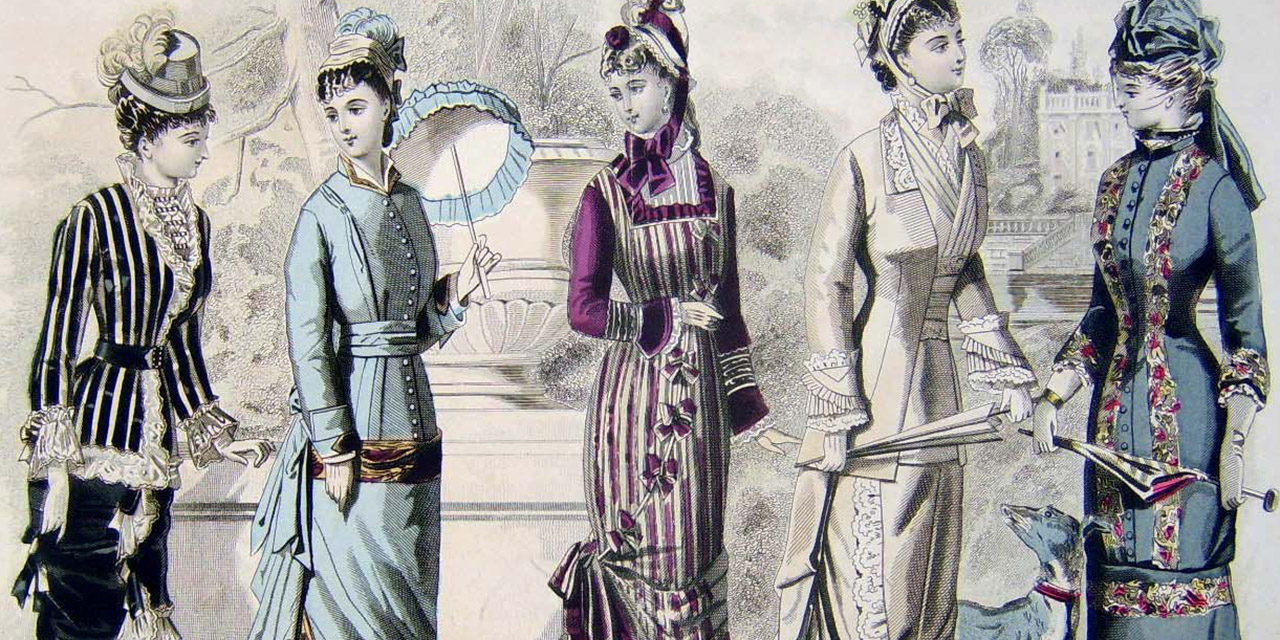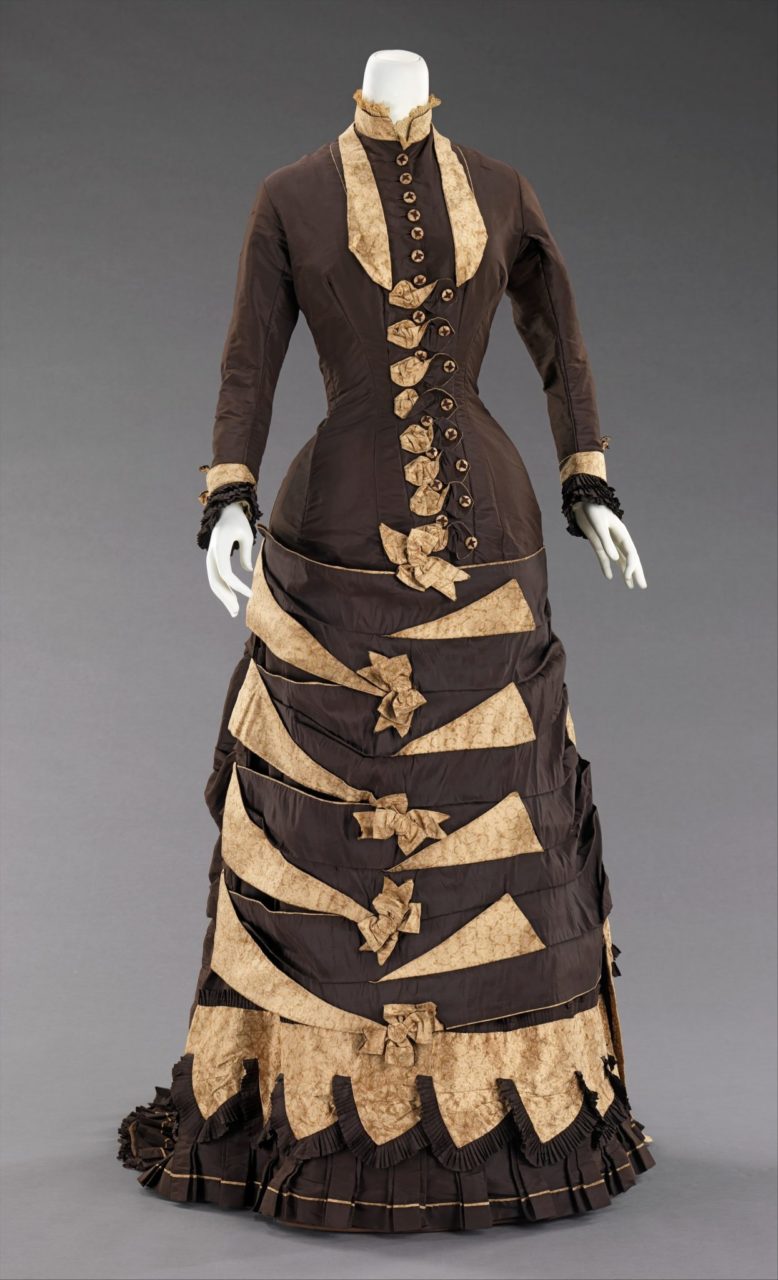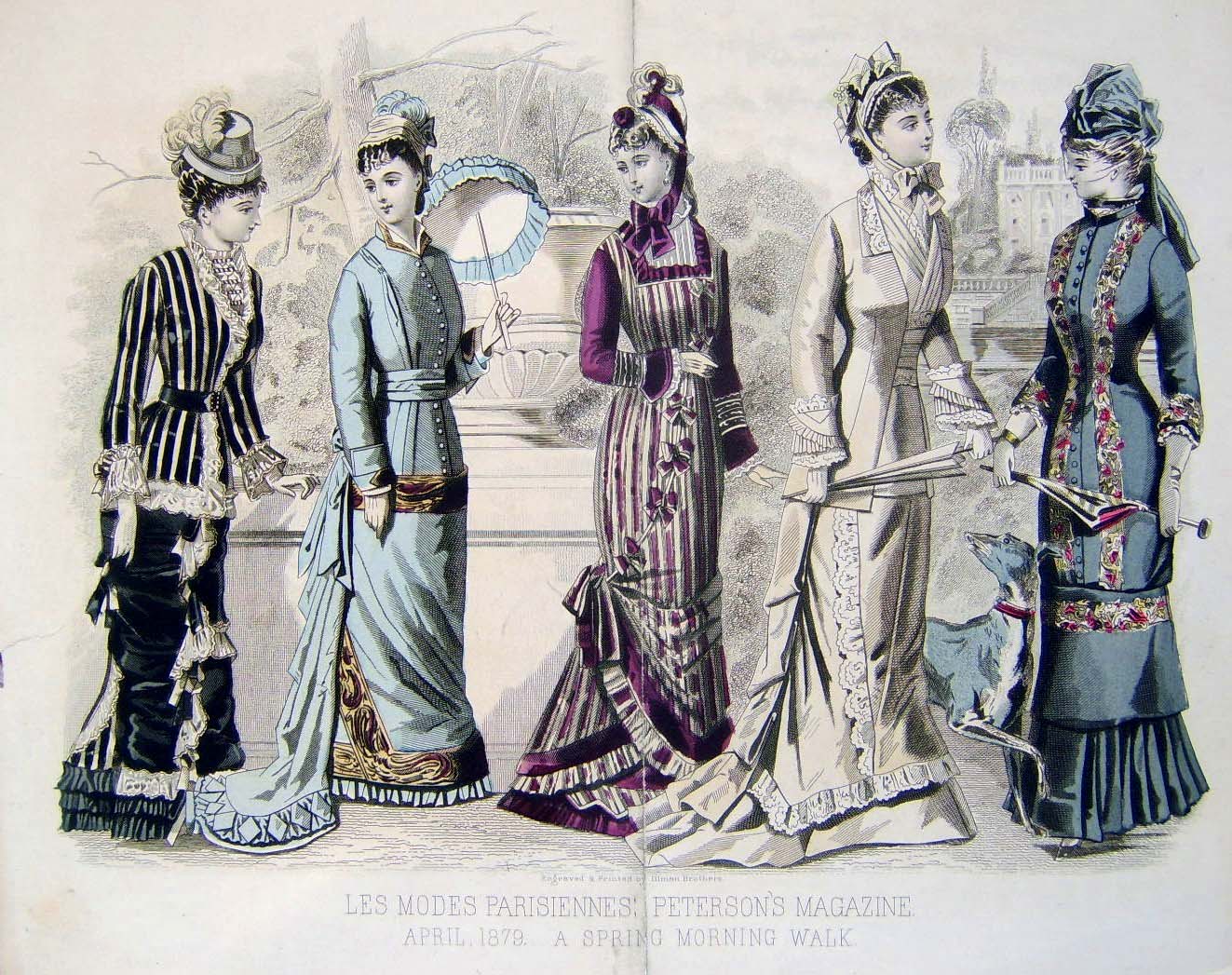A form-fitting, long-waisted, boned bodice worn in the 1870s and 1880s–almost gives the appearance of armor as the name suggests.
The Details
T
he Dictionary of Fashion History (2010) defines a cuirass bodice as: “a sheath-like bodice that fit tightly over the hips producing a long-line dress silhouette.”
The Victoria and Albert Museum’s collection features many dresses with cuirass bodices; of one from the 1870s (Fig. 1), the V&A writes:
“This ensemble characterises fashionable evening wear for women in the late 1870s. The elbow-length sleeves and square neckline show that it was probably a dinner dress rather than ball gown. Tiers of machine-made lace adorn the skirt and bodice; an overskirt of satin swathes the front of the dress. The bodice extends into a point below the waistline in front and back. This was a new style, known as a ‘cuirasse’ bodice, which appeared in fashion magazines about 1875 and remained fashionable through the 1880s.”
Penelope Byrde in Nineteenth-Century Fashion (1992) describes the cuirass bodice and the origins of its name:
“The cuirass bodice did indeed have the appearance of the piece of armour. Its tight fit was achieved by cutting it with five seams at the back, from the top of the shoulder and slanting towards the waist, while the darts in front were short and close together. The bodice was well boned on the inside to ensure a perfectly straight, smooth line which would not wrinkle or crease and it was sometime laced at the back to create an even better effect.” (72)
Two dresses in the Met’s collection from 1878 and 1879 (Figs. 2, 4) give an idea of the effect and the close fit achieved. Daniel Delis Hill’s History of World Costume and Fashion (2011) describes the key silhouette of the 1870s:
“One of the key design elements of the tight, vertical silhouette was cuirass bodice, formed by a sheath-like construction that fitted tightly and extended over the hips. To ensure smooth, long line of the bodice or jacket, decoration treatments were less pronounced than previously, even on evening gowns.” (505)
This emphasis on silhouette over decoration is particularly evident in fashion plates depicting the cuirass bodice, as in an 1878 Journal des demoiselles plate (Fig. 3) or a Peterson’s Magazine 1879 composite fashion plate (Fig. 5 – which notably includes the left-hand figure in the Journal des demoiselles plate). As the armor-inspired name suggests, the cuirass bodice is part of the 1870s incorporation of a strong menswear/tailoring influence on womenswear.
Fig. 1 - Designer unknown (United Kingdom). Evening dress, 1876-1878. Silk satin, silk ribbon, machine-made lace, cotton, whalebone. London: Victoria & Albert Museum, T.130&A-1958. Given by Mrs Thérèse Horner. Source: V&A
Fig. 2 - Designer unknown (American, 1878). Wedding Ensemble, 1878. Silk. New York: The Metropolitan Museum of Art, 2009.300.18a, b. Brooklyn Museum Costume Collection at The Metropolitan Museum of Art, Gift of the Brooklyn Museum, 2009; Gift of Genevieve Doherty in memory of Mrs. John Henry, 1964. Source: The Met
Fig. 3 - Artist unknown (French). Journal des demoiselles, 1878. Source: Pinterest
Fig. 4 - Designer unknown (American). Wedding dress, 1879. Silk. New York: The Metropolitan Museum of Art, 2009.300.3017. Gift of Mrs. Thomas W. Hotchkiss, 1939. Source: The Met
Fig. 5 - Artist unknown. A Spring Morning Walk, Peterson's Magazine, April 1879. Source: Vestuario Escenico
References:
- Byrde, Penelope. Nineteenth Century Fashion. London: Batsford, 1992. http://www.worldcat.org/oclc/757692103.
- Cumming, Valerie, C. Willett Cunnington, Phillis Cunnington, Charles Relly Beard, and C. Willett Cunnington. The Dictionary of Fashion History. Oxford: Berg, 2010. http://www.worldcat.org/oclc/1008259246.
- “Evening Dress | V&A Search the Collections.” V and A Collections, September 27, 2017. http://collections.vam.ac.uk/item/O74705.
- Hill, Daniel Delis. History of World Costume and Fashion. Upper Saddle River, NJ: Pearson Prentice Hall, 2011. http://www.worldcat.org/oclc/731445106.














